Key takeaways:
- Advocacy for gender equality involves amplifying marginalized voices and creating platforms for underrepresented groups.
- Common opposition includes resistance to change, misinformation, and personal attacks, underscoring the need for persistence and education.
- Effective strategies to handle opposition include maintaining calm, using storytelling to connect emotionally, and engaging in respectful dialogue.
- Building coalitions enhances advocacy efforts, requiring continuous relationship nurturing and open communication to align different perspectives.
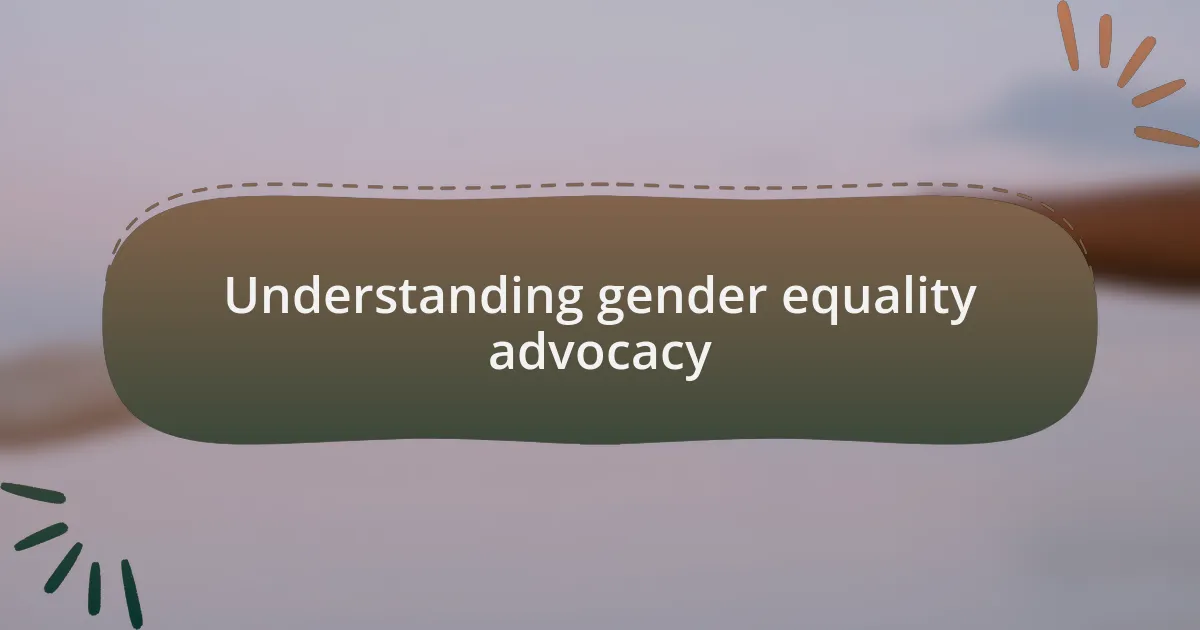
Understanding gender equality advocacy
Gender equality advocacy is rooted in the belief that everyone deserves equal rights and opportunities, regardless of gender. I often think back to a community meeting I attended, where a woman shared her struggles to obtain equal pay in her job. Listening to her story reinforced my understanding that advocacy is not just about policies; it’s about real lives affected by inequality.
Advocacy goes beyond simply speaking for marginalized voices; it’s about amplifying them. I vividly recall a time when I worked alongside a group of young activists who were passionate but inexperienced. Their determination inspired me, but I noticed their voices were often overlooked. This made me realize how crucial it is to create platforms for underrepresented groups to express their views.
As I reflect on my journey in this field, I’m constantly reminded that understanding gender equality advocacy requires both awareness and empathy. Have you ever witnessed an instance where someone felt silenced or unvalued? Those moments compel me to reflect on how I can do more. Advocacy is about fostering connections and collaboration to challenge the status quo and create lasting change.
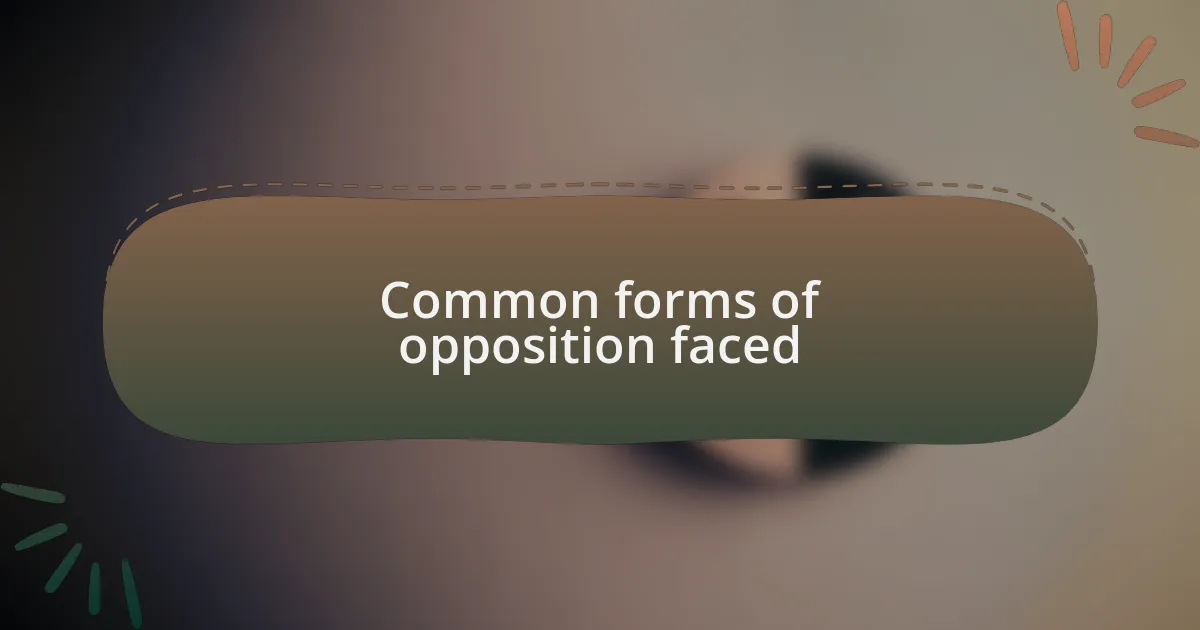
Common forms of opposition faced
Advocates for gender equality often encounter stark resistance from those who feel threatened by changes to entrenched social norms. I remember a particular town hall meeting where a local business owner dismissed my arguments about equitable hiring practices, claiming “tradition” was more important than fairness. It stung to hear these words, but it also epitomized the resistance many face when challenging the status quo.
Another common form of opposition is the spread of misinformation. During one of my campaigns, I was faced with persistent rumors that equal pay initiatives would lead to job loss. I found it incredibly frustrating, as these false narratives undermined the real benefits of equal compensation. How do we combat such misunderstandings? Through education and open dialogue, I realized we can turn skepticism into support.
Moreover, personal attacks can sometimes overshadow the real issues at hand. I once experienced a barrage of negative comments on social media simply for sharing my perspective on workplace equality. It was disheartening, yet this experience steeled my resolve to keep pushing for change. Has anyone else faced similar setbacks? In my view, these challenges remind us that perseverance is integral to advocacy.
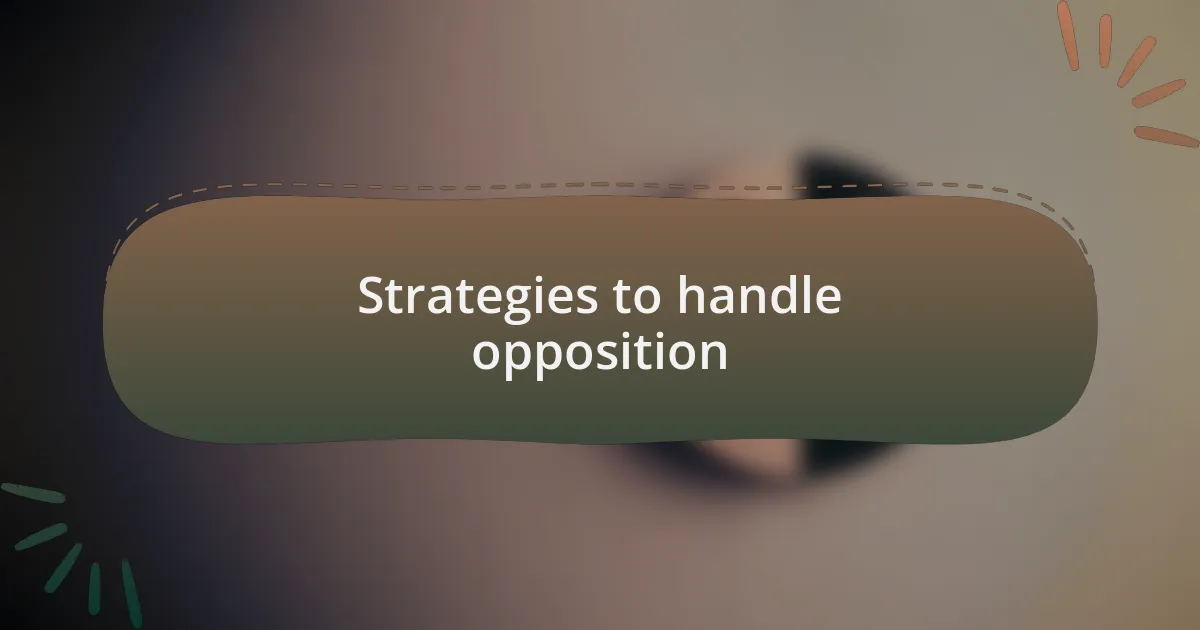
Strategies to handle opposition
When facing opposition, I found that maintaining a calm demeanor is crucial. During a heated discussion at a community forum, I focused on listening first before responding. This approach not only diffused the tension but also allowed me to identify common ground. Have you ever noticed how people are more receptive when they feel heard? It’s a simple strategy that often opens the door to more productive conversations.
Another effective strategy I’ve employed is storytelling. Sharing personal experiences can humanize the issue at hand and resonate emotionally with others. I once spoke about a close friend who faced discrimination in the workplace, illustrating how gender biases affect real lives. This shift from abstract concepts to relatable narratives transformed the atmosphere of the debate—suddenly, opposition softened as empathy took root. Why do you think story-driven advocacy can be more persuasive than data alone?
Lastly, I’ve learned the power of persistence through respectful engagement. In a recent campaign, despite facing pushback from a vocal minority, I continued to reach out to skeptics with facts and data while remaining approachable. This slow and steady approach led to eventual breakthroughs in understanding. Isn’t it fascinating how ongoing dialogue can gradually shift perspectives over time? Each interaction became a small victory, reinforcing the idea that change is often a marathon, not a sprint.
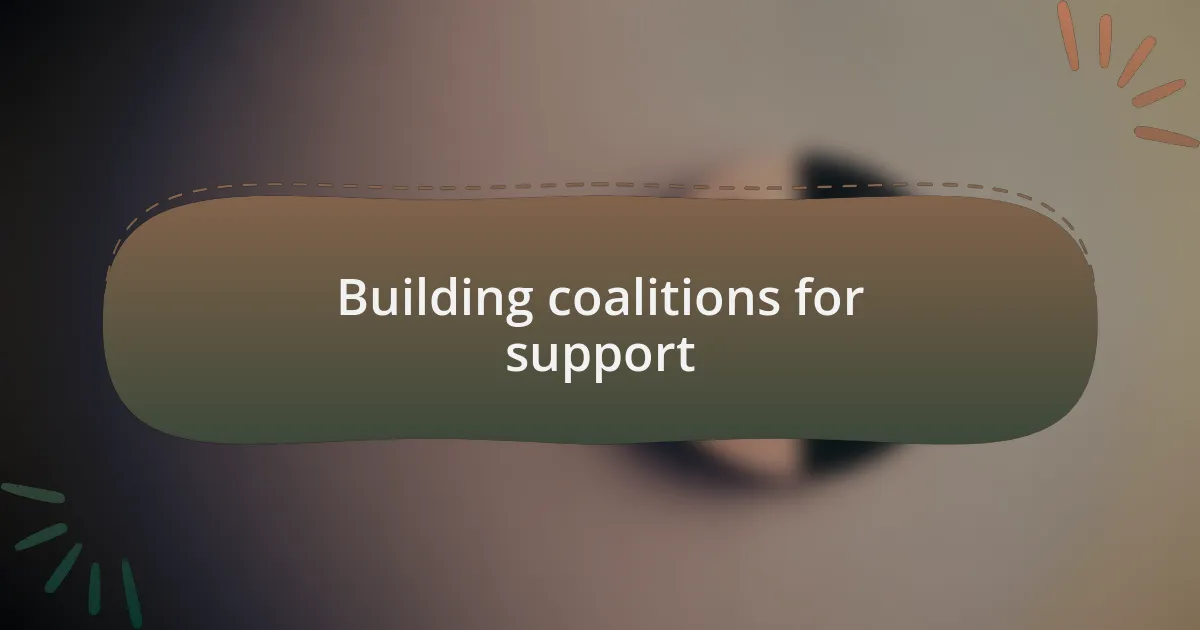
Building coalitions for support
Building coalitions is essential in advocacy, as it amplifies our voices and strengthens our collective impact. I remember organizing a community workshop that brought together diverse groups, from local women’s rights organizations to youth activists. The synergy we created not only forged new friendships but also laid the groundwork for a united front against gender inequality. Have you ever felt the energy shift when like-minded individuals joined forces? It’s invigorating.
Collaboration can be challenging, especially when aligning different priorities and perspectives. During a collaboration with another advocacy group, we faced disagreements on strategy. Instead of allowing these differences to drive us apart, we scheduled a brainstorming session where everyone could express their views. To my surprise, open dialogue transformed conflict into creativity. Isn’t it remarkable how speaking openly about tough topics can lead to innovative solutions?
Moreover, building coalitions requires continuous nurturing of relationships. Following up with partners after events is vital. I learned this the hard way when an important partnership fell flat because of neglect. By investing time in regular check-ins, we deepened our connection and built trust. This consistent engagement meant that, when challenges arose, we could rely on each other for support. How often do you take time to reconnect with your allies? The effort can significantly pay off when it comes to mobilizing collective action.
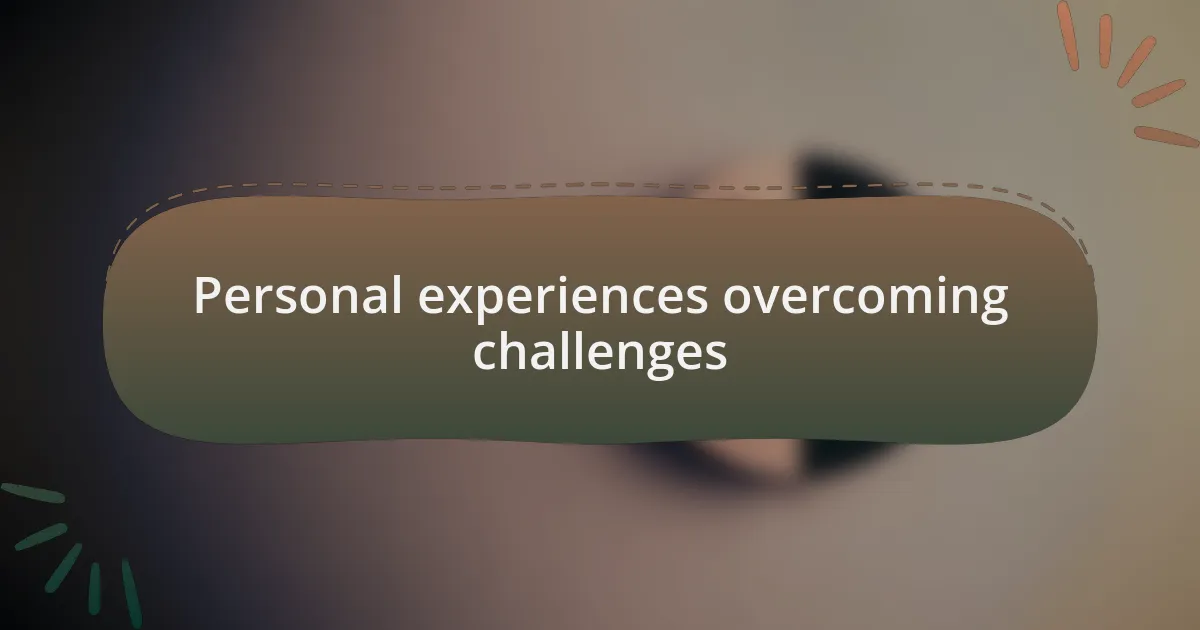
Personal experiences overcoming challenges
I remember one particularly challenging moment when I faced strong opposition from a local community leader regarding our gender equality initiatives. He believed that traditional norms should be upheld, and his resistance was vocal and intense. Rather than retaliate, I invited him to have coffee with me to understand his perspective. This simple act humanized our interaction, leading to frank discussions about our differing viewpoints and eventually fostering mutual respect.
There have been times when I felt the weight of isolation while advocating for marginalized voices. I vividly recall a meeting where my ideas were dismissed, making me question my passion for the cause. Rather than retreat into silence, I decided to share my story openly. By allowing vulnerability to surface, I connected with others who shared similar struggles and felt a newfound sense of solidarity. I realized that speaking my truth not only validated my experiences but encouraged others to do the same.
Overcoming challenges often requires personal sacrifice, which isn’t always easy. I once had to choose between attending a high-stakes family event and leading a crucial campaign meeting. The decision to prioritize the meeting weighed heavily on me, but it was a defining moment. Seeing the impact of our efforts unfold ignited a deeper commitment within me. Have you ever had to make a tough choice like that? Those moments shape our advocacy journey and define our dedication to the cause.